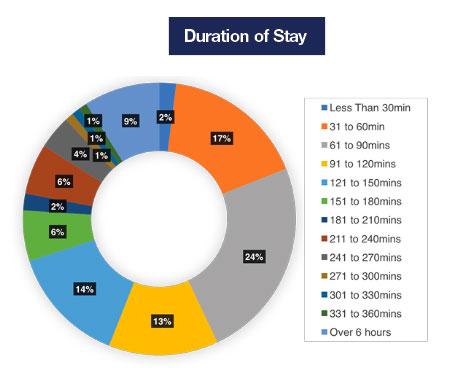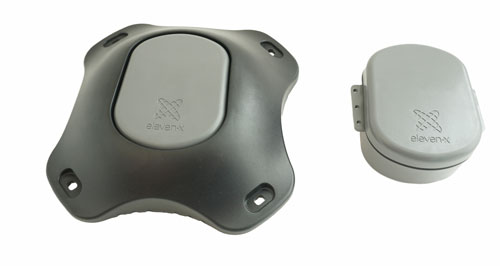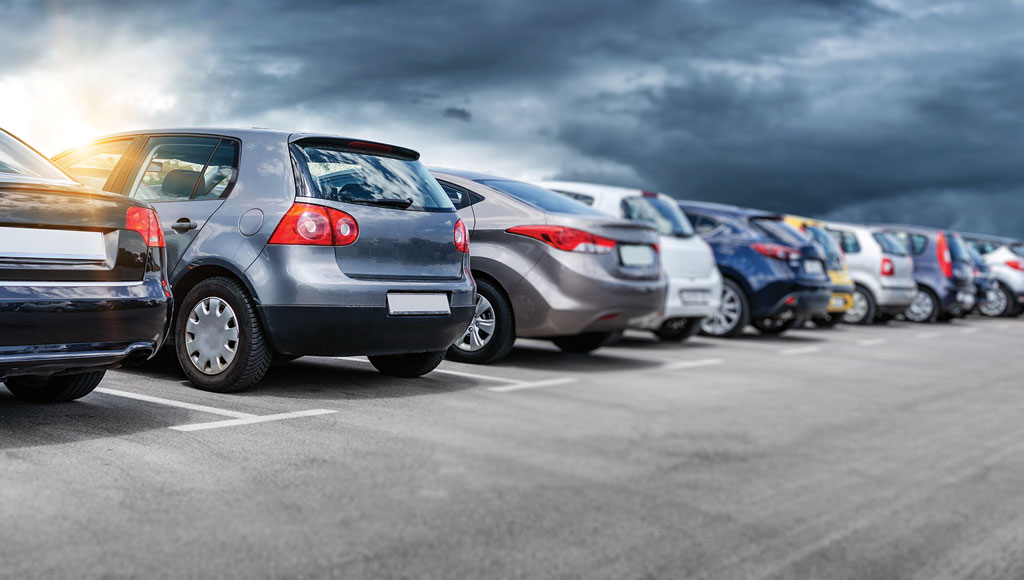Stall-Based Monitoring, the Key to Progressive Urban Parking Solutions
By Ryan Hickey
For many cities and municipalities, parking is at the center of their decision-making these days, whether it is from a revenue, usage patterns (current and future) or an operations perspective. As we move towards getting back to a new normal in 2021, the issues that were impacting the parking experience prior to COVID-19 are sure to resurface, perhaps with a slightly different appearance.
All too often, there was, and still is, a negative experience related to urban parking, with the majority of community members believing that parking resources are not meeting their needs. This perception is fueled by the length of time it can take citizens to find an available parking stall and is frequently used as the main metric for gauging whether a region has an efficient and sufficient supply of parking. When finding a possible solution, cities and municipalities must consider a large number of variables while planning out parking zones, including budgets, land use, and the overall community experience. Overall, this process becomes extremely overwhelming and can be exacerbated by inaccurate parking data supplied by outdated or inaccurate methods.
Urban planners face a variety of challenges in collecting reliable and accurate parking data to improve overall parking user experiences. Presently, many decision makers are unable to form concrete plans towards improving their parking, due to a lack of real-time data availability, and ever-changing parking behaviours driven by COVID-19. At a time when most individuals are working from home, it could be questioned whether there is a need for increased parking. In some areas of North America, it was noted that parking levels were at an all-time low, as citizens were encouraged to stay home and reduce unnecessary travel. For example, sensor data collected within Stratford, Ontario demonstrated a significant decrease in parking occupancy from March to April, dropping from 75 percent to just over 10 percent.
In contrast, it can be speculated that parking demand will drastically increase as more individuals slowly return to working out of the home. As the vaccination process begins and individuals are welcomed back into the workplace and businesses restriction-free, there is likely to be a rapid growth of single commuter vehicles taking up a greater proportion of urban parking lots and spaces.
With the uncertainty of the future needs of urban parking, it can be difficult to gauge what assets are required to improve parking experiences, including designing new lots or repurposing existing assets. In a bid for answers, managers and planners have a wide variety of data sources to choose from, including parking pay meters, gate counts, and manual counting by parking attendants. Each poses its own limitation to providing accurate and reliable data, including lack of visibility, inability to analyze parking patterns 24/7, mechanical malfunctions, and loss of data from system crashes or reboots.
As the demand for parking continues to change unpredictably, it is evident that urban planners and city parking organizations must secure an accurate method for tracking parking requirements and usage. With the help of reliable data sources, organizations can make well-informed decisions that satisfy all the necessary planning variables.
Parking Scenarios
The majority of urban centres provide three options for parking including curbside parking, surface lot parking, and parkades. Citizens select their parking environment based on convenience and the vicinity to their destination. However, a vast majority report difficulty in finding available parking spaces across all options. On average, a driver can spend between ten to twenty minutes searching city blocks for an available spot, adding to roadway congestion and further reducing a municipality’s efficiency.
Each of these three parking environments come with their own challenges in relation to securing accurate and consistent parking data. With surface-level lots, there is limited control of the entry and exit points, making it hard to count each user as they drive in and out without one controlled gateway. Due to the open nature of the parking lot, it can also be hard to track the use of the lots, as drivers could be entering simply to turn around or drop someone off before leaving again.
Parkades pose a unique challenge due to the many obstructed sightlines and the inaccuracy of gates within the lots. Ultimately, the accuracy of data collection within parkades greatly affects revenue and wayfinding.
Curbside parking, due to its exposure to the elements, can have a general overall negative experience with users and compliance without real-time monitoring can be difficult. It is evident that reliable and accurate real-time data collection is also needed on the street level to create a more positive parking experience.
Collecting the Right Data Accurately and Cost-Effectively
As city parking organizations look to improve the overall parking experience moving forward, accurate data collection is required to understand the needs of drivers within the region. In particular, when a city selects a specific data collection system, they should first ensure that it provides high accuracy, high reliability, and real-time, as well as historical, data collection. With the help of a highly cost-effective smart parking technology solution, cities will be better equipped to design a parking strategy that addresses local parking demand, supply, and market potential.
Options for data collection methods include manual counting, parking gates/loops, pay meters, apps, video, or sensors. While each method has its own benefits, only sensors, with the potential to be combined with video/image processing, can offer necessary 24/7 analysis, complete data accuracy, reliability, real-time status updates, and stall-level data, unless multiple methods are combined.
When looking at street-level parking lots, cities can consider a mix of stall occupancy sensors and image processing monitoring. Using both methods simultaneously ensures that cameras and videos can provide a cost-effective solution to monitoring the entire lot. Supplemented by individual stall sensors to track specialty stalls or stalls inside a camera’s blind spot, parking strategies can be built on data that is highly accurate and consistent.
Meanwhile, a cost-effective solution for curbside parking includes stall occupancy sensors. Accuracy and real-time are crucial here, in all types of weather and environments, and sensors can accurately detect in real-time whether a spot is currently occupied and for how long the stall is in use. Additionally, sensors have the capability to support improved parking compliance for timed stalls with real-time alerts. This functionality will improve parking turn-around and improve revenue for the municipality. Overall, cities cannot really rely solely on parking meters, which typically lack accuracy when it comes to true occupancy data and this has direct impact in skewing perceptions of overall parking trends across the city.
Comparing sensors to other forms of parking data collection technology, it has been demonstrated many times over that the solution for many cities is to utilize stall-level sensors for accuracy and convenience. If other data collection methods are already present, including sensors will allow city planners to utilize a holistic approach in understanding parking trends and customer’s needs.


What Data Needs to be Collected?
In order for city planners to design a parking strategy that can meet parking demand, supply, and future market potential, there are a few key data components that must be collected consistently. While the initial strategy may be to focus on the total number of parking spaces available and track how many are occupied at certain times to determine supply in relation to demand, this statistic is not indicative of real-time patterns and confounding variables.
To design a more effective strategy, cities must be able to take into account the overall physical environment of the parking lot and the surrounding spaces, how attractive the parking lot is to users, what types of trips are being made when the lot is being used, what parking operations are in place at each lot, and how users are experiencing the lot on a day-to-day basis. Cities need to be able to track how long each driver uses the spot, times of day when parking is busier, and how walking distance to destinations and parking price affect parking volume. Being able to track throughout the entirety of a day in real-time and over a long period of time will provide planners with profiles on each lot, as well as various profiles of its users. This key information can be related to what businesses are located in each region and provide a deeper understanding as to what is attracting people into certain areas.
Overall, there are three main metrics that are vital to designing a parking solution strategy including volume, occupancy, and customer mix (which is based on the duration of each stay). When understanding volume, parking planners should pay close attention to walking distances from the lot to local hotspots, price impacts, and demand, along with land use in relation to the parking location. All of these factors have a direct relation to parking volume and patterns should be closely analyzed to understand their effects throughout the year. Occupancy is vital, but cities should also focus on the intensity of occupancy and the length at which visitors tend to stay in their parking stalls. Finally, customer mix provides planners with more information on who is accessing which parking lots, at what times, and whether demand varies according to a specific pattern throughout the year. In order to fully understand the customer mix, it is just as vital that cities recognize the parking lots that are generally under-utilized, which can drive projects for further improvement.

With stall-based sensors, cities are able to capture real-time and historical data that can highlight the trends and performance over time of parking locations. Through this in-depth data collection, cities can extrapolate why driving and parking behaviours may have changed and how cities need to modify their parking strategy accordingly. The most important factor to stall-level sensor data collection is the ability to track stall-specific traffic from one time frame to another, which allows for evidence-based decision-making. When tens of millions of dollars are required to initiate new parking projects, cities need data and to be certain of that data on which they are basing their decisions.
Sensors Provide ROI
The use of sensor-based parking data collection has succeeded in a variety of major cities, including Los Angeles and San Francisco. Los Angeles parking owners experienced an increase in revenue by 35% per month through the implementation of sensors. The use of this technology also allowed them to operate without parking attendants- lowering labour and enforcement costs. San Francisco, which is known for limited and expensive parking, also chose to adopt a stall-based sensor pilot program between 2011-2013. Implemented across 25% of the city’s metered parking lots, city officials reported an increase in net parking revenue which meter rates and garage rates dropped. While there were some challenges experienced in these early deployments, technology innovations and increased awareness have alleviated most of those obstacles.
The maintenance and design of parking environments tend to be a large portion of every city’s budget; therefore, it is in the best interest of municipalities to seek out a data collection system that captures all the necessary performance indicators. With minimal maintenance required and the ability to support improvements for parking enforcement through alerting, sensors ensure reliable and continuous analysis of key parking variables for any city. With real-time stall-based sensors, cities have the opportunity to assess a wide variety of parking solution options and understand which parking variables directly affect their community.
As a stand-alone solution, or in combination with other parking data collection methods, cities have the ability to maximize revenues and parking asset usage, while remaining in line with municipal budgets and improving public safety and wellbeing.
Interested in learning more about stall-based monitoring and its benefits for a wide variety of parking environments?
Visit eleven-x.com for more details.




